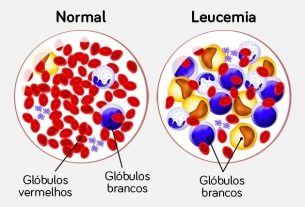Congenital torticollis is when the baby is born with a muscle contraction or shortening in the neck that causes the head to be tilted and/or turned to one side and is normally noticed in the first few weeks of life.
Although the causes of congenital torticollis are not yet completely known, it is believed to occur due to injuries during birth or poor positioning within the uterus during pregnancy, for example.
If congenital torticollis is suspected, it is important to consult your pediatrician to confirm the diagnosis. Treatment is usually done with physiotherapy, but sometimes surgery may also be indicated to correct the torticollis.

Main symptoms
The main symptoms of congenital torticollis are:
- Reduced head movement;
- Lump or swelling on one side of the neck;
- Head turned and/or tilted to one side;
- Difficulty moving the head;
- Preference for sleeping on your stomach;
- Asymmetry of the head and/or face.
Normally, congenital torticollis is identified within the first few weeks of life. However, sometimes it may not be noticed until the child begins to exhibit abnormal posture or difficulty moving their head.
When left untreated, congenital torticollis can affect the development of bones in the face and skull, which can cause asymmetry of the head or face, difficulty breastfeeding and, as the child grows, scoliosis, which is an abnormal deviation of the spine. Understand better what scoliosis is.
Possible causes
The causes of congenital torticollis are not completely known. However, it is believed to happen due to injuries during birth, poor positioning of the baby inside the uterus and abnormal development of neck muscles or vertebrae, for example. See the main causes of torticollis.
Furthermore, congenital torticollis is more common in the case of a first pregnancy, a lower volume of amniotic fluid during pregnancy and a history of difficulties during childbirth, especially when the baby leaves the uterus.
How to confirm the diagnosis
The diagnosis of congenital torticollis is made by the pediatrician taking into account the symptoms and physical examination, in which swelling in the neck, limited movement or abnormal posture of the baby’s head is usually noted.
Sometimes, the doctor may also recommend imaging tests, such as cervical spine x-rays, neck ultrasounds and MRIs, to confirm the diagnosis.
If you wish, make an appointment with the nearest pediatrician to evaluate the possibility of congenital torticollis:
Taking care of your health has never been easier!
How the treatment is carried out
Congenital torticollis is usually treated with physical therapy and torticollis tends to improve between 6 and 8 months of age. However, after this age, surgery may be indicated to correct congenital torticollis, especially when the baby still has limitations and difficulty moving the head.
If torticollis makes breastfeeding difficult, it is recommended to talk to your pediatrician or another qualified healthcare professional about other positions and techniques for breastfeeding your baby. See the best positions for breastfeeding.
Furthermore, it is also important that the baby’s parents or caregivers know how to do some exercises at home to complement and enhance physiotherapy treatment.
Exercises for congenital torticollis
The baby’s physiotherapist should teach some stretching and releasing exercises for the affected muscle for parents to do at home, complementing the treatment.
Some exercises for congenital torticollis are:
- Get the baby’s attention with something that makes noise, positioning the object in front of him and, little by little, moving the object to the side, to encourage the baby to turn his neck to the affected side;
- Place the baby on the bed and sit next to him, so that to look at you, he has to turn his neck to the affected side.
The use of warm water bags or heated towels before performing the exercises is essential to facilitate neck mobilization and reduce the risk of pain.

Sign up for our newsletter and stay up to date with exclusive news
that can transform your routine!
Warning: Undefined array key "title" in /home/storelat/public_html/wp-content/plugins/link-whisper-premium/templates/frontend/related-posts.php on line 12
Warning: Undefined array key "title_tag" in /home/storelat/public_html/wp-content/plugins/link-whisper-premium/templates/frontend/related-posts.php on line 13



